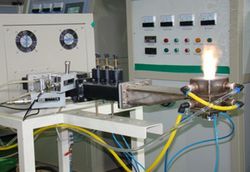Application of Microwave Plasma

Summary:
Currently, low-temperature plasma (temperature from 2000 to 50000K) has been widely used. It has become an important technology means in industry. For example, we use plasma arc to cut, weld, and spray and to manufacture all kinds of novel light sources and monitors and MHD generation used to thermoelectric direct conversion. In the chemical sector, plasma chemistry has become a very active new area. In the microelectronics industry, plasma etching and vapor deposition application are widely used. Above situation shows that low-temperature plasma has gradually penetrated into many areas and being showed broad prospects.
Plasma excited by microwave has below characteristics:
1. It has a higher degree of ionization and decomposition.
2. The ratio of ion temperature and electron temperature to neutral gas temperature is very high and the carrier gas maintains a suitable temperature. The temperature in base with this feature can not be too high in the case of vapor deposition.
3. The plasma can be maintained at high pressure.
4. There is no internal electrode. Within the plasma container, in addition to the working gas there are no any materials and it was clean with no pollution. Plasma generator can maintain a long life.
5. The plasma could use magnetic confinement method and it is restricted in the agreed space and microwave knot and magnetic circuit can be compatible.
6. High safety. High voltage source and the plasma generator are isolated form each other, which can not be achieved for DC plasma. It also features of mall microwave leakage and easy to accord with radiation safety standards. These features are difficult to meet for high frequency induction plasma.
7. Microwave generator is stable and easy to control.
8. Microwave plasma is one kind of relatively quiet plasma in many cases and it is unlike DC discharge that accompanies high noise.
Microwave-excited plasma forms:
1. Microwave transmission lines and resonators.
2. The slow-wave structure edge field.
3. Near-field microwave antennas.
4. Plasma column excited by coaxial machine SAW and waveguide-based SAW.
5. To use electron cyclotron resonance to excite plasma.
Some users
Peking University, Nanjing University and Southeast University
Related Items

